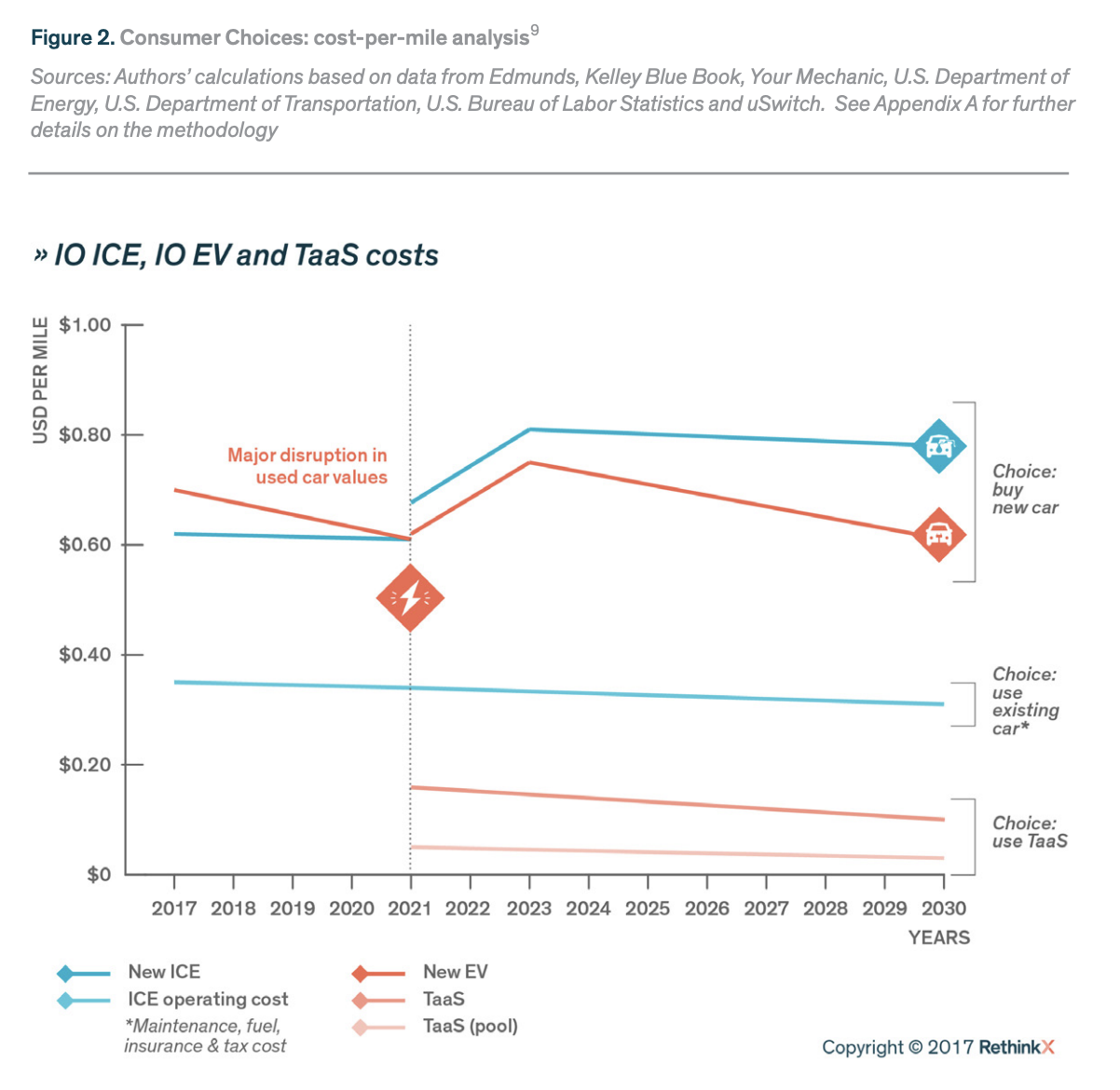False. The biggest costs of running a taxi service are the costs of paying the driver, paying the dispatchers and other people who work for the service, paying for the car, and buying the fuel. Autonomous, electric vehicles (A-EVs) take away most of these costs. Furthermore, things like taxi licenses, which restrict the number of taxis in a given area to ensure that drivers can earn a living income, could go away entirely with the coming disruption of transportation.
Explore the evidence...
- Autonomous EVs last 5 to 7 times longer than the average human-driven car, so ride-sharing services and fleets will adopt A-EVs for purely economic reasons. Ride-sharing services, like Uber, will convert to EVs simply because it is the more economically viable thing to do. Watch RethinkX co-founder Tony Seba discuss the two stages—transition to EVs, then to A-EVs—in more detail.
- Not only are Robotaxi's more economically viable, but they are safer... Read more about liability, injury and vehicle damage on p62 of our Rethinking Transportation report.
- The real disruption of transportation is through Transportation-as-a-Service (TaaS); an Uber on demand, autonomous and electric, owned by fleets, not individuals. Why? Because a fleet can drive over 100,000 miles per year. It can utilize electric vehicles fully, unlike individuals who only drive 10,000 miles a year. When Level 4 technology is approved by regulators, the cost of TaaS will become 10 times cheaper than owning an individual car. Watch Tony Seba discuss the TaaS disruption here.
Why are fleet-driven robotaxis used through TaaS cheaper than individually owned cars?

- With utilization rates up to 10 times higher, robotaxi fleets would be driven 100,000 miles a year, or 500 billion miles collectively. Fleets of A-EVs are both the better economic and environmental option. That’s more than the total number of miles currently driven in California. In other words, a relatively small fleet could cater for all the state’s road passenger transport needs, with zero emissions. Read our blog post to find out more about the climate positive benefits of robotaxi fleets here.
- Fleets (of taxis, as well as cars, buses and trucks) will go electric because the per-mile cost of EVs is one-third (soon to be one-sixth) the cost of ICE transportation in high-utilization models. TaaS will rapidly replace the model of individual car ownership and with it the combustion engine. Electric vehicles (trucks, vans, buses and cars) can drive half a million miles (soon to be one million) as opposed to around 140,000 miles for ICE vehicles. Companies like Amazon and Fedex will have no choice but to quickly replace their whole fleets with electric trucks and vans for purely economic reasons. Read more about the outcome of forthcoming technology disruptions across our foundational sectors on p45-47 of our book Rethinking Humanity.
- To learn more about how EV and A-EV adoption will unfold around the world, read p27-30 of our report Rethinking Transportation.
- Read p15-19 of our report Rethinking Transportation to learn more about the economics of A-EV and TaaS disruption, and specifically p19-20 to learn why robotaxis and TaaS will be so cheap.
- p57 of our report Rethinking Transportation shows how cost will be the most important factor affecting economic choice. The scale of the cost differential will be the key determinant of consumers choosing TaaS over independently owned vehicles.
Witness the transformation
Once TaaS is introduced, consumers purchasing a new car will choose TaaS over independently owned ICE vehicles for purely economic reasons.
Learn more about the disruption and transformation of the transport sector.
Published on: 12/07/23
